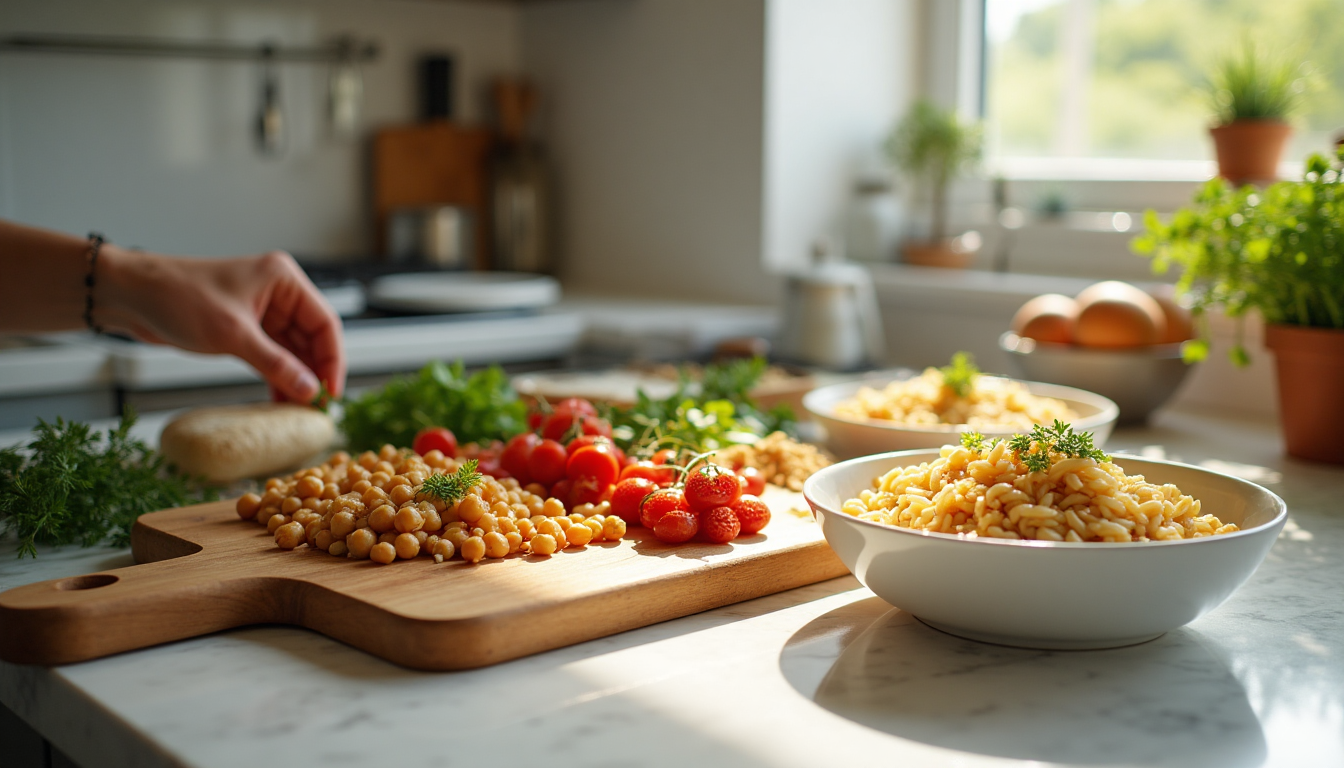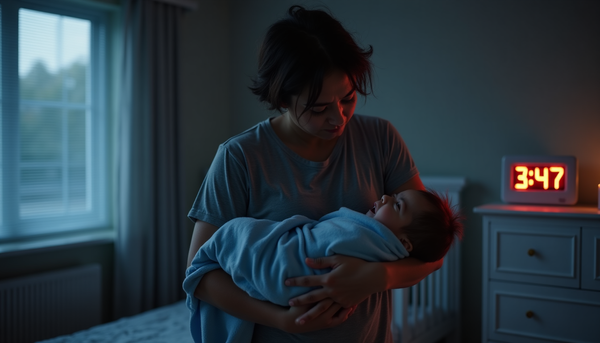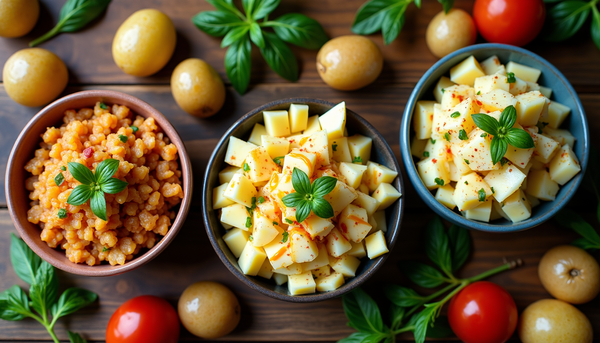When Food Trends Leave People Behind (And How to Fix That)

You know that moment when a recipe goes viral and suddenly everyone's making it except... well, half the people you actually cook for?
That's exactly what happened to me with the whole "marry me chicken" phenomenon. Don't get me wrong - I totally understand the hype. There's something undeniably seductive about a dish that's supposedly so good it'll inspire marriage proposals. But as I watched my social media feeds fill up with these creamy, sun-dried tomato masterpieces, I kept thinking about my vegetarian sister-in-law, my plant-curious teenagers, and honestly? All those Wednesday nights when I just want something satisfying without having to thaw chicken.
The Problem with Food Gatekeeping
Here's the thing about viral food trends - they're often built around a single star ingredient that becomes non-negotiable. Take "marry me chicken." The name itself suggests that without the chicken, you're just... what, making "friend zone vegetables"?
But here's what I've learned from years of cooking for a household where dietary preferences change faster than TikTok algorithms: the magic was never really about the chicken. It was about that perfect storm of creamy, garlicky, sun-dried tomato goodness that makes you close your eyes and do that little food-happy shimmy.
The original recipe works because it hits all our comfort food buttons - it's rich, it's aromatic, it's got that beautiful color contrast, and it comes together in one pot. Those are the elements worth stealing, not just copying ingredients blindly.
Why Chickpeas Are Actually Genius Here
I'll be honest - when I first swapped chickpeas for chicken, it felt a little like showing up to a black-tie event in jeans. Would it work? Would people notice? Would my omnivore husband give me that polite smile that means "this is fine but I'm ordering pizza later"?
But here's what happened instead: the chickpeas actually made the dish better in some ways. They soak up all those incredible flavors from the creamy sauce, they add this satisfying substantial texture, and unlike chicken (which can go from perfect to rubber in about 30 seconds), chickpeas are basically foolproof.
Plus, let's talk practicality for a second. Canned chickpeas mean this becomes a true pantry meal. No defrosting, no food safety concerns, no "oh crap I forgot to take the chicken out" moments. Just rinse, drain, and you're halfway to dinner.
The Orzo Factor (And Why Size Matters)
Now, if you're thinking "pasta is pasta," let me stop you right there. Orzo isn't just cute rice-shaped pasta - it's basically the perfect vehicle for this type of dish. Here's why:
Those little grains cook directly in the sauce, absorbing all the flavors as they go. You get pasta that tastes like the dish, not just pasta that's been topped with sauce. It's the difference between wearing perfume and actually smelling like flowers, if that makes sense.
And can we appreciate how orzo just looks right next to chickpeas? I know we eat with our eyes first, and there's something really satisfying about the way these ingredients play together visually. It feels intentional, not like a substitution.
The Sun-Dried Tomato Secret
Here's a little insider tip that nobody talks about: save that oil from your jar of sun-dried tomatoes. I use it to sauté the aromatics at the beginning, and it adds this incredible depth of flavor that makes people ask "what's your secret ingredient?"
Sun-dried tomatoes are basically flavor bombs. They bring sweetness, acidity, and this concentrated tomato essence that you just can't get from fresh tomatoes. In a vegetarian dish, they're doing some of the heavy lifting that umami-rich ingredients like chicken would normally handle.
Making It Work for Everyone
The beautiful thing about this approach is how adaptable it becomes. Got a kid who thinks vegetables are suspicious? Start with extra orzo and gradually increase the good stuff. Have someone who needs more protein? Throw in some white beans alongside the chickpeas, or add a handful of toasted pine nuts at the end.
I've made this dish with leftover roasted vegetables, with different types of beans, even with cooked quinoa instead of orzo when I was trying to be extra virtuous. The base - that creamy, garlicky, herb-forward sauce - is forgiving enough to handle all kinds of experimentation.
The Real "Marry Me" Elements
So what actually makes people fall in love with this type of dish? I think it comes down to a few key things:
Comfort without guilt. It feels indulgent but it's actually pretty balanced nutritionally. Protein, vegetables, herbs, reasonable portions of cream and cheese.
Flexibility. You can make it exactly as written, or you can riff on it based on what's in your fridge. Both approaches work.
One pot simplicity. Less cleanup means more time to actually enjoy the meal with people you care about.
Visual appeal. It looks like something you'd order at a restaurant, which makes weeknight dinner feel a little special.
Beyond the Recipe
But here's what I really want to talk about - this idea that we can take what works about food trends and make them more inclusive. Not because we have to, but because we get to.
Every time I see a viral recipe, I try to ask myself: what would make this work for more people? What are the essential elements versus the arbitrary ones? How can I keep the spirit while adapting the specifics?
Sometimes it's as simple as swapping proteins. Sometimes it means rethinking cooking methods or flavor profiles. But almost always, it means recognizing that the best dishes are starting points, not endpoints.
The Bigger Picture
Food has this unique power to bring people together, but only if we let it. When we get too precious about "authentic" versions of dishes, we risk excluding people from the table. And honestly? Some of my best cooking discoveries have come from those moments when I had to improvise, adapt, or completely rethink an approach.
This chickpea and orzo version has become a regular in our rotation, not because it's a substitute for something better, but because it's genuinely delicious in its own right. My meat-eating husband requests it. My teenagers actually eat the vegetables. My vegetarian friends feel included when they come for dinner.
Your Turn to Experiment
So here's my challenge for you: next time you see a recipe that looks amazing but doesn't quite fit your life, don't just scroll past. Ask yourself what you can borrow from it. What flavors are calling to you? What techniques seem worth trying? How could you make it work for the people you actually cook for?
Maybe start with this chickpea and orzo version, but don't stop there. Try it with different beans, different pasta shapes, different vegetables. Add your own favorite herbs or spices. Make it spicier, make it milder, make it yours.
Because at the end of the day, the best "marry me" dish isn't the one that follows someone else's recipe perfectly - it's the one that makes your people happy to sit around your table. And that's worth way more than going viral, don't you think?
What's the last food trend you adapted for your household? I'd love to hear how you made it work for your people. After all, the best recipes are the ones we share - and improve on - together.




